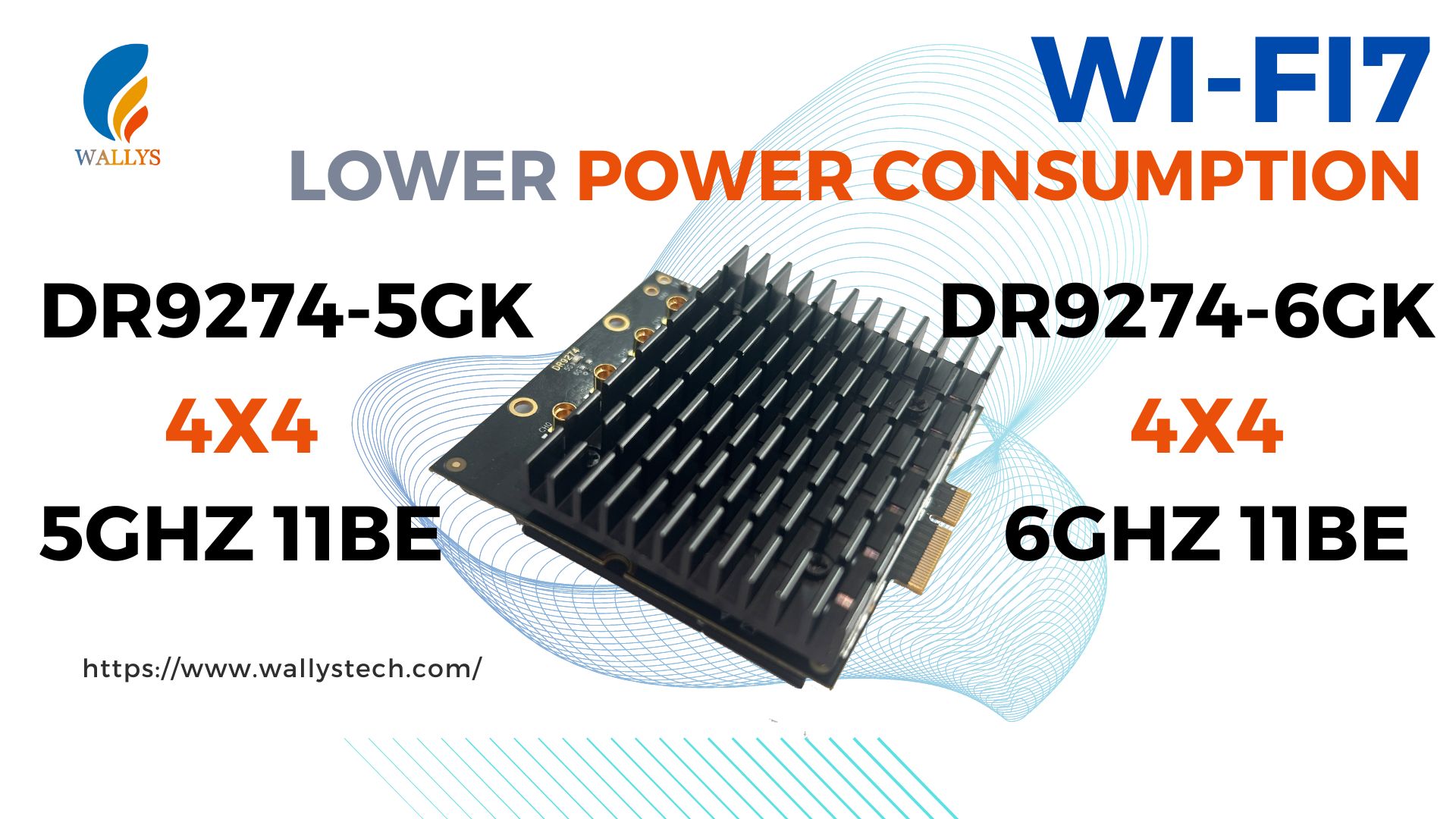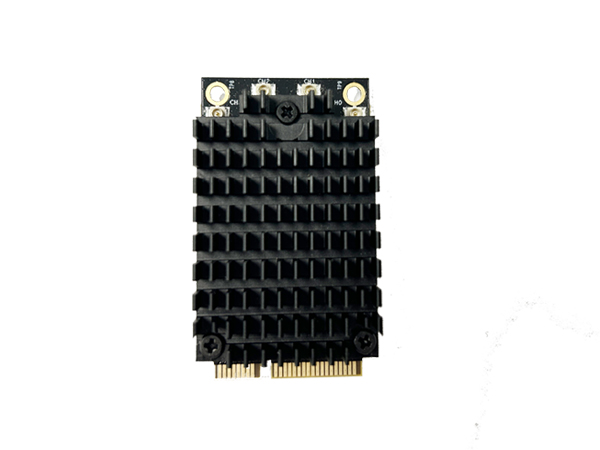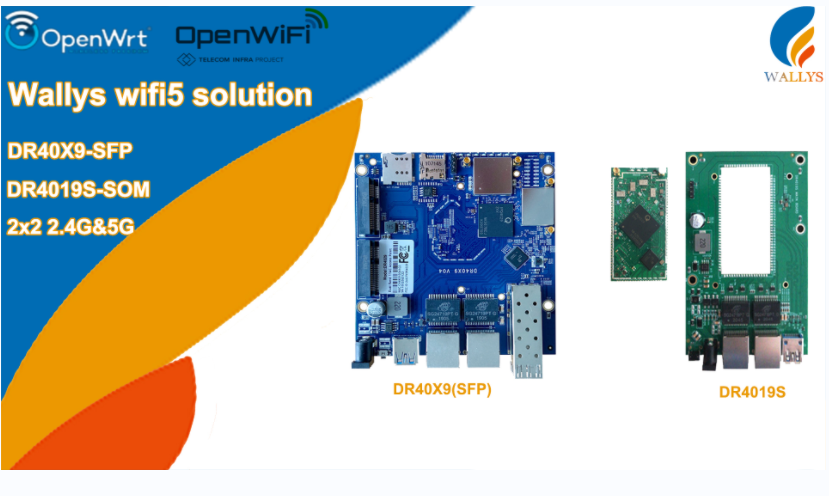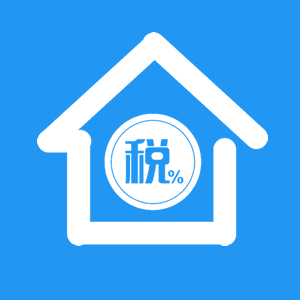Maximizing Wi-Fi Connectivity while Minimizing Environmental Impact: The Case for Spectrum Efficiency in the 6 GHz Band
6E DBDC 4T4R QCN6224 QCN9274 QCN6274 WiFi7 Lower Power Consumption Network Card
**Maximizing Spectrum Efficiency for Wi-Fi Connectivity**
In the ever-evolving landscape of wireless communication, Wi-Fi technology stands as a cornerstone, providing ubiquitous connectivity in homes, businesses, and public spaces. However, the seamless operation of Wi-Fi networks relies heavily on access to the radio spectrum—a finite and carefully managed resource governed by national regulatory bodies worldwide.
**Challenges in Spectrum Management**
As demand for wireless connectivity continues to soar, regulators face the complex task of managing spectrum allocation to meet diverse needs while ensuring equitable access and minimizing interference. This balancing act requires careful consideration of competing priorities, ranging from economic growth and technological innovation to environmental sustainability and social equity.
**The Crucial Role of the 6 GHz Band**
Among the various frequency bands allocated for wireless communication, the 6 GHz band has emerged as a focal point in spectrum policy discussions. With its relatively wide bandwidth and favorable propagation characteristics, the 6 GHz band holds immense potential for supporting high-performance Wi-Fi networks, especially with the advent of Wi-Fi CERTIFIED 7.
**Importance of Full 6 GHz Access for Wi-Fi Performance**
For Wi-Fi technology to fully leverage the capabilities of the latest standards and deliver optimal performance, unrestricted access to the entire 6 GHz band is essential. This allows for the deployment of wider channels, enabling higher data throughput rates, lower latencies, improved mobility, and better support for densely populated areas.
**Global Regulatory Responses**
Recognizing the significance of the 6 GHz band for Wi-Fi connectivity, several countries have taken proactive measures to expand Wi-Fi access to this spectrum. By doing so, they aim to meet the growing demand for indoor and outdoor connectivity while promoting innovation and economic development.
**Environmental Considerations in Spectrum Policy**
In recent years, environmental sustainability has emerged as a critical consideration in spectrum policy formulation. The deployment of wireless technologies, including Wi-Fi networks, has implications for energy consumption, carbon emissions, and electronic waste generation. As such, regulators are increasingly mindful of the environmental footprint associated with spectrum allocation decisions.
**Evidence of Sustainability Benefits**
A comprehensive study, titled “Sustainability Benefits of 6 GHz Spectrum Policy,” provides empirical evidence of the environmental advantages of prioritizing Wi-Fi access in the 6 GHz band. By comparing different spectrum utilization scenarios, the study demonstrates that unrestricted Wi-Fi access leads to significant reductions in energy consumption and carbon emissions compared to alternative deployments.
**Impact on Connectivity and Energy Consumption**
Furthermore, the study highlights the tangible benefits of ensuring full Wi-Fi access to the 6 GHz band in terms of connectivity and energy efficiency. Restricted spectrum access not only hampers Wi-Fi performance but also drives users towards alternative cellular networks, resulting in higher energy consumption and associated environmental costs.
**Conclusion: Balancing Connectivity and Environmental Impact**
In conclusion, maximizing spectrum efficiency for Wi-Fi connectivity requires a multifaceted approach that considers technological advancements, regulatory frameworks, and environmental sustainability goals. By prioritizing Wi-Fi access in the 6 GHz band and optimizing spectrum utilization, policymakers can support the expansion of high-performance wireless networks while mitigating their environmental footprint. In doing so, they can achieve a harmonious balance between connectivity needs and environmental stewardship in the digital age.
DR9274-5G6G|DBDC QCN6224 QCN9274 QCN6274 WIFI7 5GHZ&6Ghz Network Card
DR9274-5G6G based on QCN9274 Chipset is an enterprise wireless module integrated with 2×2 5G & 2×2 6G MU-MIMO Dual Band Wireless Module designed specifically to provide users with mobile access to high-bandwidth video streaming, voice, and data transmission for office and challenging RFenvironment in factories, warehouses establishment.
Chipset: Qualcomm Atheros QCN9274
WLAN Host Interface: PCI Express 3.0 Interface
System Memory: 2Mbit serial I²C bus EEPROM
Standard Operating Voltage: 5V
Operating Systems: QSDK
Host Interface: M.2 E Key interface with PCIe 3.0
Antenna Cable / Port: 4 x ufl Connectors
Frequency Range:
– 5GHz: 5.15~5.825GHz
– 6GHz: 5.925GHz-7.125GHz
Data Rates for WLAN:
– 5GHz 802.11a/n/ax/be: max 22dBm per chain
– 6GHz 802.11a/n/ax/be: max 22dBm per chain
Channel Spectrum Widths for WLAN:
– Supports 20/40/80/160MHz at 5GHz
– Supports 20/40/80/160/320MHz at 6GHz
Modulation Techniques: OFDMA – BPSK, QPSK, DBPSK, DQPSK, 16-QAM, 64-QAM, 256-QAM,1024QAM, 4096QAM
Temperature Range:
– Operating: -20 °C to 70 °C
– Storage: -40 °C to 85 °C
Humidity:
– Operating: 5% to 95%
– Storage: Max. 90%
Certification: REACH & RoHS Compliance
Power Consumption:
– Maximum: 10W
– Normally: 8W
Dimensions (WxHxD): 30mm x 50mm x 14.5mm
DR9274-6GK|4T4R QCN6224 QCN9274 QCN6274 WiFi7 Lower Power Consumption Network Card
Wallys DR9274-6GK
The Wallys DR9274-6GK is an industrial grade wireless module based on the QCN9274 (QCN6274) chipset. It is designed to provide high-bandwidth video streaming, voice, and data transmission in office and challenging RF environments such as factories and warehouses.
Specifications:
Chipset: Qualcomm Atheros QCN9274 (QCN6274)
WLAN Host Interface: PCI Express 3.0
System Memory: 2Mbit serial I²C bus EEPROM
Standard Operating Voltage: 5V
Operating Systems: QSDK
Host Interface: M.2 E Key interface with PCIe 3.0
Antenna Cable/Port: 4 x MMCX Connectors
Data Rates for WLAN: 6GHz 802.11ax/be, max 22dBm per chain
Channel Spectrum Widths for WLAN: Supports 20/40/80/160/320MHz at 6GHz
Modulation Techniques: OFDMA: BPSK, QPSK, DBPSK, DQPSK, 16-QAM, 64-QAM, 256-QAM, 1024QAM, 4096QAM
Temperature Range: Operating: -20 °C to 70 °C, Storage: -40 °C to 85 °C
Humidity: Operating: 5% to 95%, Storage: Max. 90%
Certification: REACH & RoHS Compliance
Power Consumption: 10W (Maximum), 7W (Normally)
Dimensions (WxHxD): 30mm x 50mm x 14.5mm
Additionally, Wallys offers a new version of the 4×4 5GHz lower power consumption WiFi7 network card, the DR9274-5GK. For more information, please contact our sales team at sales1@wallystech.com.
Inquiries:
Wallys is dedicated to continuous innovation, constantly pushing the boundaries of WiFi technology. In addition to its hardware products, Wallys also offers a range of ODM/OEM services, including:
Customization: Wallys can customize its WiFi 5/6/7 products and embedded boards to meet the specific needs of its customers.
Engineering support
Testing and certification
For inquiries or to discuss your specific requirements, please contact our dedicated sales team at sales1@wallystech.com.
Wallys – Empowering Connectivity, Driving Innovation.




































